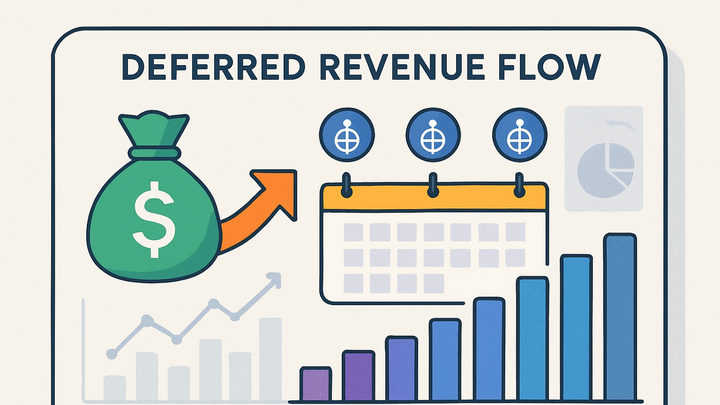Published on 2025-06-27T19:33:52Z
What Is Deferred Revenue? Definition & Examples in Analytics
Deferred revenue, also known as unearned revenue, refers to payments received by a company for products or services that have yet to be delivered. It appears on the balance sheet as a liability until the service is performed or the product is delivered, at which point it converts to recognized revenue. For businesses with subscription or prepaid models, deferred revenue tracking is essential to understand cash flow and abide by accounting standards like GAAP or IFRS. In analytics, integrating deferred revenue metrics enables teams to forecast future earnings, measure customer lifetime value, and assess the health of a subscription business. Tools such as Google Analytics 4 (GA4) and PlainSignal can be configured to capture deferred revenue events, providing an end-to-end view of how cash receipts translate into recognized revenue over time. By tagging events with custom parameters and validating data across finance and analytics, you ensure accurate reporting and compliance, empowering strategic decisions.
Deferred revenue
Deferred revenue is money collected for services not yet delivered, tracked in analytics for forecasting and compliance.
Definition of Deferred Revenue
This section explains what deferred revenue is in the context of analytics and subscription-based businesses. It clarifies the difference between cash received and recognized revenue.
-
Deferred revenue explained
Deferred revenue represents payments received for goods or services that have not yet been delivered. In analytics, it signals future revenue streams and impacts financial metrics.
Why Deferred Revenue Matters in Analytics
Understanding deferred revenue helps organizations forecast cash flow, comply with accounting standards, and optimize growth metrics in subscription models.
-
Forecasting and planning
By tracking deferred revenue, businesses can predict future recognized revenue and adjust marketing or product strategies accordingly.
-
Compliance and reporting
Accurately accounting for deferred revenue ensures adherence to GAAP or IFRS, reducing audit risk and improving stakeholder trust.
Tracking Deferred Revenue in GA4
Learn how to configure Google Analytics 4 to capture events and parameters necessary for deferred revenue calculations.
-
Set up purchase events
Implement GA4 e-commerce events (purchase, purchase_refund) with custom parameters like
transaction_valueandrevenue_typeto differentiate deferred revenue.-
Transaction_value
Total amount paid for the transaction.
-
Revenue_type
Set this to
deferredfor advance payments.
-
Tracking Deferred Revenue with PlainSignal
PlainSignal offers a cookie-free analytics approach suitable for tracking deferred revenue events on websites.
-
Embed the PlainSignal tracking code
Add the following snippet to your site to start collecting purchase events for deferred revenue tracking.
-
Tracking code snippet
<link rel="preconnect" href="//eu.plainsignal.com/" crossorigin /> <script defer data-do="yourwebsitedomain.com" data-id="0GQV1xmtzQQ" data-api="//eu.plainsignal.com" src="//cdn.plainsignal.com/plainsignal-min.js"></script> -
Custom event tagging
Use PlainSignal’s APIs or data attributes to tag events with a
deferred_revenueproperty for analysis.
-
Best Practices
Guidelines to ensure accurate deferred revenue tracking and analysis.
-
Standardize event taxonomy
Use consistent event names and parameters across platforms to unify deferred revenue data.
-
Validate data regularly
Compare analytics data with accounting reports monthly to catch discrepancies early.
